| Columns Retired Columns & Blogs |
Glad to see the Jadis brand gracing the pages of Stereophile again .
I measured the Jadis I-35 using Stereophile's loan sample of the top-of-the-line Audio Precision SYS2722 system (see the January 2008 "As We See It" and www.ap.com). I carefully installed the nine tubes, as instructed in the manual, but was then faced with the same problem Art Dudley had: Which of the two pairs of unlabeled binding posts were for the left channel, which for the right? And was one of each pair for 4 ohm and one for 8 ohm output transformer taps, as implied by the wiring diagram on the top of the transformers? As Art says, it appears that there is just one output transformer tap, duplicated on the two pairs of terminals for each channel.
The I-35 offers a maximum voltage gain of 40.9dB into 8 ohms, which is typical for an integrated amplifier; and, as AD mentioned, it inverts signal polarity. The input impedance was very much higher than the specified 100k ohms at all audio frequencies. The output impedance was fairly low for a traditional tube design, at 0.66 ohm at low and middle frequencies, dropping slightly to 0.61 ohm at the top of the audioband. As a result, the modification of the amplifier's frequency response by the interaction of the impedance with that of our standard simulated loudspeaker was a mild ±0.4dB (fig.1, gray trace). This graph indicates that the amplifier's output falls off above the audioband, reaching –0.8dB at 20kHz and –3dB at 40kHz. As a result, the I-35's reproduction of a 10kHz squarewave shows slowed leading edges (fig.2). However, no overshoot or ringing is visible. A 1kHz squarewave was reproduced with flat tops (fig.3), confirming the excellent low-frequency extension seen in fig.1. The response traces in fig.1 were taken with the volume control set to its maximum. Even though the balance control was centered, there is a 0.3dB mismatch in the two channels' outputs. Reducing the volume to "12:00" eliminated this imbalance (fig.4); commendably, the ultrasonic behavior was not affected by the operation of the volume control.
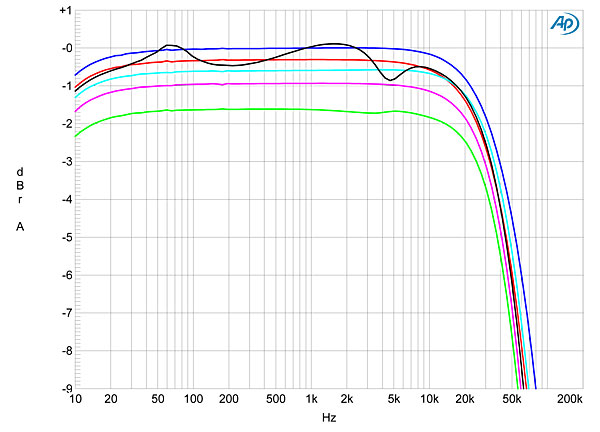
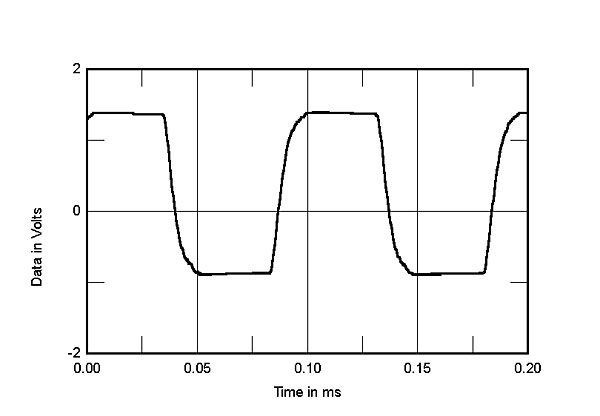
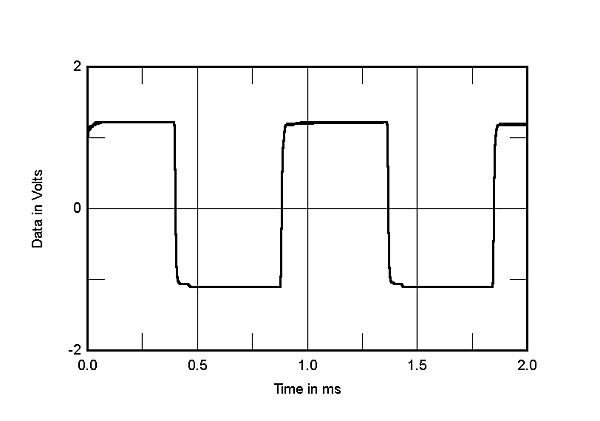
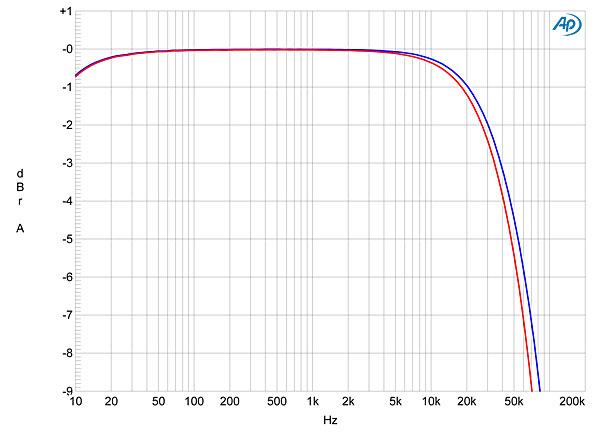
Channel separation (not shown) was modest, at >60dB below 3kHz, L–R; and >50dB below 3kHz, R–L. More important, the leakage from a driven input to an adjacent undriven input was –30dB in both channels. The input selector switch does not appear to short unused inputs to ground. It might, therefore, be worth experimenting with shorting plugs inserted into unused inputs. Noise levels were only okay, with a wideband unweighted signal/noise ratio, measured with the input shorted but the volume control set to its maximum, of 63.5dB left and 65dB right. These ratios did not improve when the measurement bandwidth was restricted to the audioband, but did improve by 9–10dB with A-weighting.
Fig.5 indicates that the Jadis's noise floor is disturbed by both odd- and even-order power-supply harmonics, the former due to magnetic interference, the latter to electrical. I experimented with different ways of connecting the Jadis to the Audio Precision generator and analyzer. Fig.5 was taken with the condition that gave the lowest level of spuriae, which was with both generator outputs and analyzer inputs floating; ie, neither was referenced to ground.
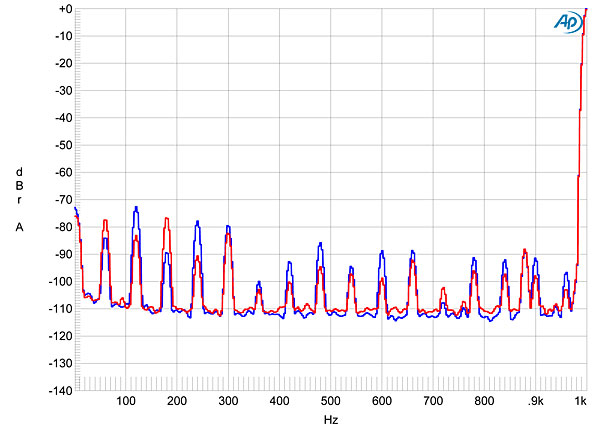
The I-35 is specified as having a maximum power output of 30W, equivalent to 14.8dBW into 8 ohms. Fig.6 plots the THD+noise percentage against output power into 8 ohms. The THD begins to increase steadily above the noise floor above 400mW, as is typical of a design with low loop-negative feedback. The minimum THD+N is fairly low at that level, at 0.09%. We indicate an amplifier's maximum output power when the THD reaches 1%; this graph reveals that that happens with the I-35 delivering 17W into 8 ohms (12.3dBW). Relaxing the criterion to 3% THD, the I-35 puts out 37W into 8 ohms (15.7dBW). The picture is somewhat different into 4 ohms (fig.7): Not only is the minimum THD higher, at 0.14%, but the distortion rises faster as the output power increases. At 1% THD the power is just 7.1W (5.5dBW), and at 3% THD it is 17.5W (9.4dBW). As supplied for review, the I-35's single output-transformer tap appears to be optimized for loads of 8 ohms and above.
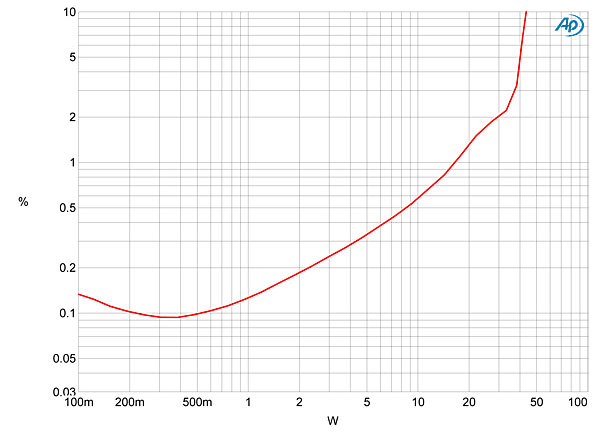
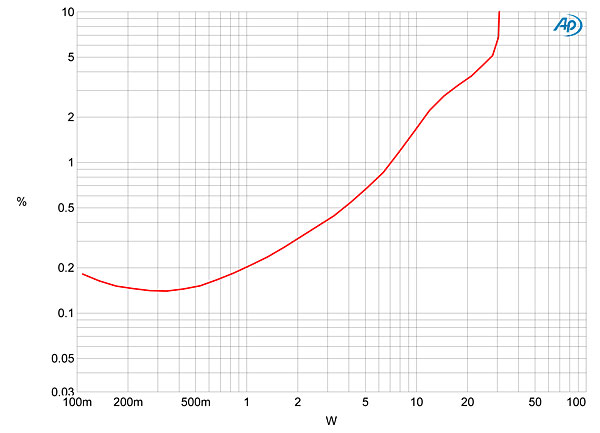
This was confirmed by examining how the THD+N percentage changes with frequency at a fairly low output level, 4.9V, which is equivalent to 3Wpc into 8 ohms or 6Wpc into 4 ohms (fig.8). The distortion is relatively constant across the audioband into 8 ohms, though the left channel (blue trace) is not as linear as the right (red). The THD does rise below 100Hz, but only slightly, implying that the output transformers have appropriately hefty cores. Into 4 ohms, however, the distortion rises dramatically in the treble (cyan and magenta traces). I didn't plot the THD+N into 2 ohms, the amplifier being driven into clipping even at this modest level. (At 1kHz, the left channel's THD into 2 ohms measured 5.2%!)
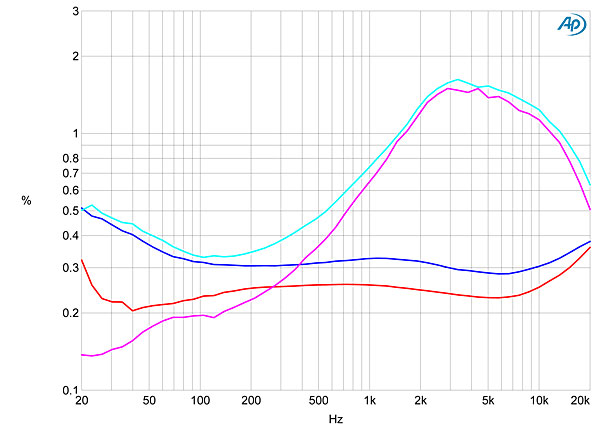
Fortunately, the distortion signature is predominantly low-order in nature, with the second harmonic the highest in level in the left channel (fig.9), and the second and third harmonics equal in level in the right (fig.10).
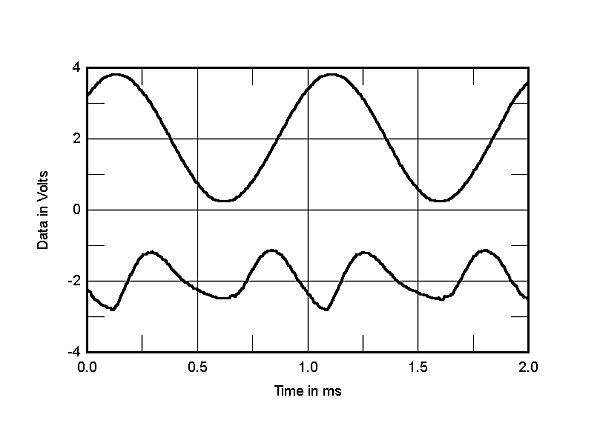
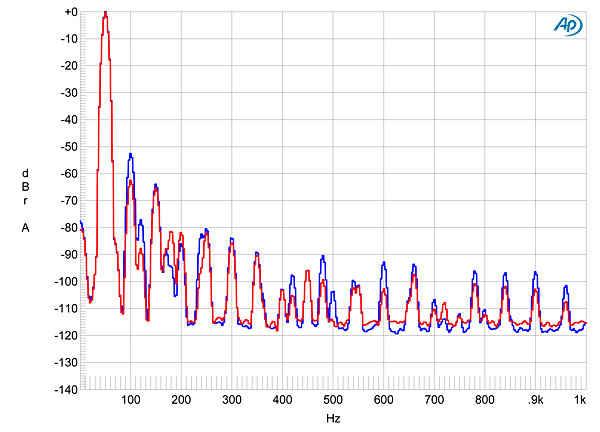
The I-35 didn't perform well when it came to intermodulation distortion. At a level into 8 ohms that was well below visible clipping on the oscilloscope screen, an equal mix of 19 and 20kHz tones gave a 1kHz difference product at –49dB in the left channel (0.3%, fig.11, blue trace), with the higher-order products at 18 and 21kHz at the same level in the right channel (red), and even higher in the left (blue). At 1W into 8 ohms (fig.12), all these intermodulation products dropped by up to 20dB.
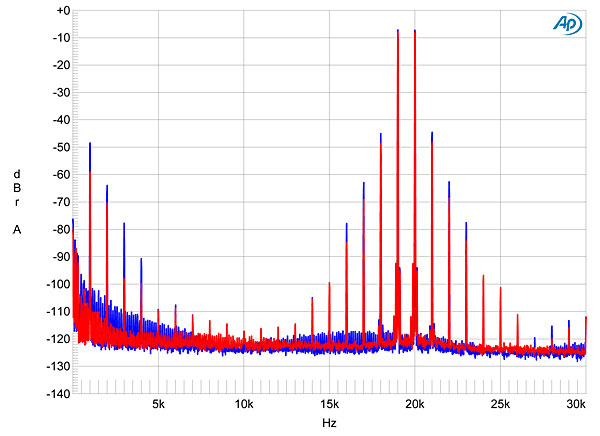
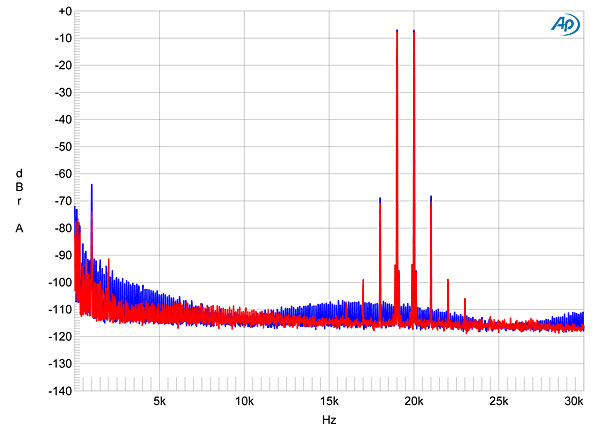
The Jadis I-35's measured performance was typical of a tube design operating with low loop-negative feedback, though the high quality of its output transformers is worth pointing out.—John Atkinson

Dear Mr Dudley,
I love to read your chronicles so I decided to register to be abble to post a comment to tell you that a frenchman lost in the south of France enjoy very much reading stereophile.
As I am reading about the Jadis I35 and the "petit salé aux lentilles", I am listening to the LP's "JS Bach 6 Suites for Cello solo, Anner Bijlsma, RCA (RL 30369) on a Barroco Cello (von Mattio Goffriller Venezia 1669) and I think that I never heard such a beautiful cello sound.
My amp is a brand new integrated Jadis DA88S with a double push pull of KT120 working in pure class A.
The source is a "full" LP12 (Ekos SE and Urika, Keel, Radikal) mounted with a Lyra Argo i. The speakers are BW 802 nautilus. (cables 80%pure silver-20%OFC-Teflon PTFE)
Before this box set I listened to the Glen Gould Silver Jubilee Album (CBS 76983) and it was a pure joy.
Thanks so much for your devotion to audiophily!
PS: If by any chance you would be passing by the south of France (Languedoc Roussillon, it would be my pleasure to teach you how to prepare some regional dishes like the "Gardianne de Taureau" (Bull stew cooked in red wine with carrots and black olives and served with rice)
Sincerely yours,
Jean-Luc

Dear Jean-Luc,
Thank you for your comments and your kind invitation; Gardianne de Taureau sounds like it would be right up my alley! I don't know when I'll be able to return to France, but when the time comes, as I'm certain it will, I will look you up on the forum. Alternatively, please look me up on Facebook.
In any event, I imagine your Jadis-powered system sounds wonderful, and I wish you many good years of musical exploration with it.
Popluhv, thanks also for reading the Jadis review. Tonally, the two products are not dissimilar, the Kondo having just a shade more reach at the bottom end. The Kondo is also a little more musically clear -- which is to say, it is freer from those distortions of perceived pitch and pitch realtionships that can sometimes make music playback sound less "right" than the real thing. But given its own level of acomplishment, one would have to praise the Jadis for its wildly superior level of value.

Thanks for the reply Art!
apropos your last post, I passed that black victorian Sharon Springs last summer; found myself turning up the road to have another look!